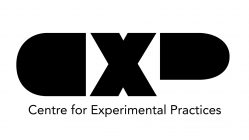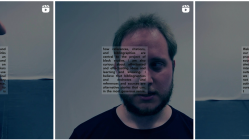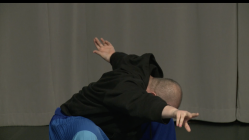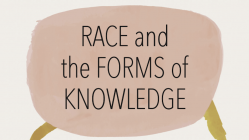This dense video was created in November 2015 and encapsulates the Judaica project up until that point. It was never formally published because of an editorial delay and is still marked as a draft. As of 2017 the project has moved to a new phase. However, this video’s approach to audiovisual density using textual overlays and video juxtapositions to articulate an embodied research process may still be of interest. I include it here along with a text that was to accompany its publication.
Duration: 21:12
Project: Judaica
Practitioners: Sióbhán Harrison, Jennifer Parkin, Ben Spatz
Director and Video Editor: Ben Spatz
Date Published: November 2015
Research Statement
After more than a decade of ‘Practice as Research’ in the UK, few of the works developed under this rubric are available for study via archival multimedia documents. Indeed there is a growing sense today that live performance is not a sufficient medium for the dissemination of PaR, not least because it lacks the kind of diachronic and synchronic durability that is so fundamental to scholarly mechanisms of dissemination and review. To rectify this situation, publications like Studies in Theatre and Performance, Contemporary Theatre Review, The Drama Review, and Theatre, Dance and Performance Training are developing online wings or counterparts based on a variety of internet platforms. While global corporations like Google and Apple focus their massive resources on digital video streaming, scholars engage in a parallel exploration of new ways to document, archive, and analyze PaR through multimedia.
My embodied research focuses on the integration of vocal and physical performance technique in what I call songwork. Since 2013, I have begun to explore issues of cultural identity and cultural politics by developing songwork technique in relation to a variety of songs that are marked as traditionally Jewish. Following an intensive work session at the Centre for Psychophysical Performance Research in Huddersfield in the summer of 2015, I put together this ‘dense’ video essay to share some of these materials with a wider audience. After considering a number of possible online formats and platforms, what became increasingly clear to me was that the simple, standalone video has been underappreciated as a medium for sharing embodied research.
The video essay has several advantages over more complex, nonlinear, custom-designed platforms: First, as one of the basic building blocks of digital space, video files are more technologically robust, more easily transferred from one platform to another, and more likely to remain viable over time. Second, a dense video document is hardly more difficult or expensive to produce than a tightly written article: Video editing is now accessible to individual practitioner-scholars in a way that interactive website and software design is not. Finally, the basic form of video has more than one hundred years of history as an artistic and documentary medium. In exchange for their greater formal innovation, other platforms abandon the well-tested rhetoric of the motion picture. Video may not be the most exciting form of new media, but it is tried and true. In the context of a new and unstable field like PaR or embodied research, this degree of formal conservatism seems useful — or at least strategic.
Once video has been chosen as the format of a research document, myriad questions arise: How should a scholarly video essay be structured and formatted? What layers of annotation and metadata best provide access to the epistemic content of the documented practice? Just as the density of prose can be increased through the use of footnotes, parenthetical annotations, citations and references, specialized language, more elaborate sentence structure, and other textual complexities (key features that distinguish academic writing from popular nonfiction), the ‘Judaica’ dense video makes use of strategies like textual annotation, voiceover, time code, embedded imagery and animations, and simultaneous juxtaposition. My first attempt to develop a prototype in this medium was a four-minute dense video called ‘Sequence of Four Exercise-Actions’, which was published on the Theatre, Dance and Performance Training weblog. ‘Judaica: Designing a Laboratory for Song-Action’ is a more challenging work in several ways: it is five times as long; it involves vocal as well as physical practice, which presents different challenges to montage; and it documents a research project rather than a training session. The last of these is perhaps most important: ‘Judaica’ is my first dense video document to pass through a full peer review process.
Since this video was made, my thinking has evolved in several respects. First, realizing that the video essay is a complex medium with vast potential and that a wider interdisciplinary platform is needed to explore its relationship to embodiment and embodied practice, I launched in 2017 a new Journal of Embodied Research. Published online by Open Library of Humanities, JER is the first peer-reviewed, open access, academic journal to focus specifically on the innovation and dissemination of embodied knowledge through the medium of video. With an editorial advisory board drawn from across the arts and humanities, it aims to pioneer the scholarly video article as a new form supporting development of diverse embodied research projects.
Second, I was honored to be selected as an Leadership Fellow (2016-2018) by the UK Arts and Humanities Research Council. The funded project ‘Judaica: An Embodied Laboratory for Song-Action’ is now underway, including six months of full-time embodied research involving three skilled practitioners in a studio laboratory. Alongside the project’s two extraordinary Research Assistants, Nazlıhan Eda Erçin and Agnieszka Mendel, I continue to develop new songwork technique, now within a more comprehensive methodological framework and with an increased sense of urgency regarding the politics of contemporary Jewish identity. Video documents from this more recent embodied research process are currently being published through the Urban Research Theater website and will gradually be edited into dense videos beginning in 2018. However, I believe this 2015 video essay still has much to offer as an early document in an emerging field.







[…] The next step was to create a longer dense video focused on my current research, which I called ‘Judaica: Designing a Laboratory for Embodied Research’ (21:12). This video continues to experiment with audiovisual density using textual overlays and […]